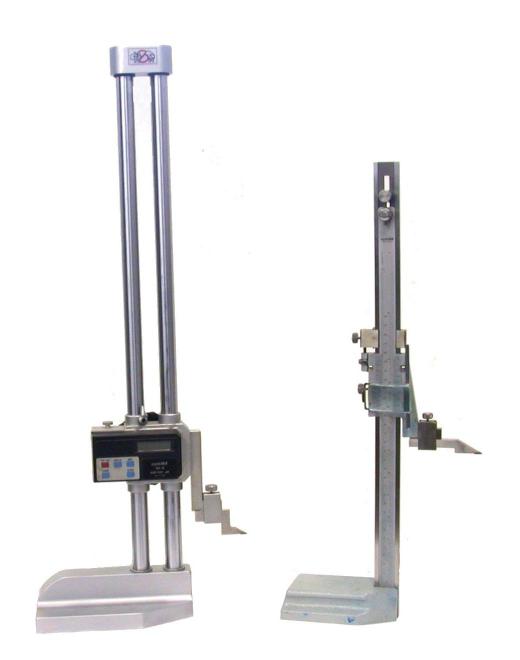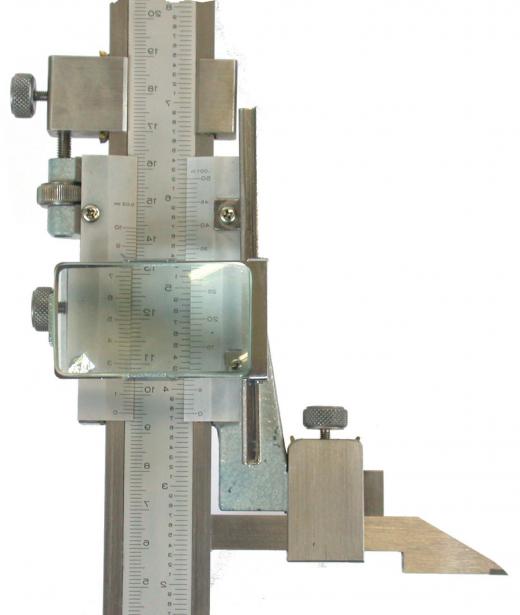A vernier height gauge is typically used to take precise vertical measurements of various objects. It is possible to measure many different things with the gauge, but they are most often used in metalworking and other related industries. They often have a scribing tool as the measurement level, allowing the operator to repeatedly mark vertical distances on pieces of metal that can then be worked on. Heights or vertical distances may also be measured using the bottom of the scribe.
The name of this tool is derived from the special, sliding vernier scale that the devices make use of. Vernier scales are an additional measurement tool that can augment a straight scale and allow for more accurate measurement. This is typically achieved by a fixed scale printed along the length of the measuring device, while a sliding vernier scale is on the moving component. When the zero mark on the sliding scale is located between two graduations on the fixed scale, the operator can find the location where the vernier and fixed graduations line up to determine a precise measurement. This system can allow for a much higher measurement resolution than is normally possible with a straight scale.

When used in metalworking and other related industries, a vernier height gauge is typically equipped with a scribing tool. This will often take the form of adjustable level so that it can be set to particular heights and then used to scribe marks on a piece of metal. Operators may use this functionality to mark many pieces of metal with identical and precise measurements. The bottom side of the scribing tool can also be used to measure vertical distances, rather than inscribing height markings.

In order to ensure the continued accuracy of a gauge, it is typically possible to adjust the level. This may be necessary if the scribing tool becomes worn or damaged, and is often adjusted through the use of a feed screw. It may be possible to make fine adjustments using the feed screw if the height gauge is out of calibration.
Vernier height gauges are one of the two main types of tools used to make accurate vertical measurements. The other type is typically referred to as an electronic height gauge. Rather than a vernier scale, these gauges have a digital readout. Digital height gauges may be more expensive than their vernier counterparts, but typically take less training or expertise to read correctly.
